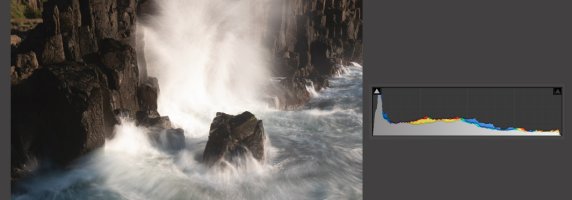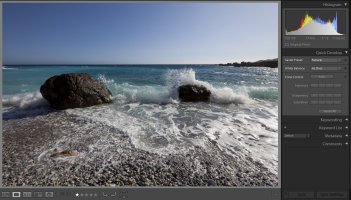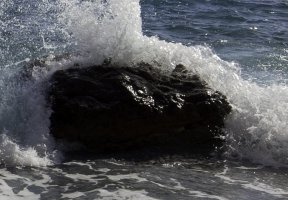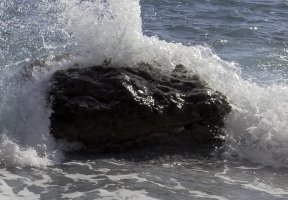You are using an out of date browser. It may not display this or other websites correctly.
You should upgrade or use an alternative browser.
You should upgrade or use an alternative browser.
Preorder: Canon EOS RP camera and kits
- Thread starter Canon Rumors
- Start date
You just never know with some folksI hope it was evident enough that it was assumed.
Upvote
0
Yes! In fact, after I pre-ordered the RP, I bought a used 40mm pancake on eBay for the expressed purpose of fitting it to the adapter on the RP. I once owned that lens, and it was a beautiful thing - image quality I mean. The size was great on my SL1, sure, but the quality was never quite appreciated as much as it should have been. It was really L quality in retrospect. I sold it to justify some other purchase later, and always regretted it. I'm curious now to see how big it'll be with the adapter. Suspect it'll still be smaller than the 35 1.8.
A native R pancake would be amazing, although I don't think we can expect the magic quality of the 40mm to be likely.
Yes, that 40mm is such a fantastic lens for the price. If you can live with the f/2.8, you get at super sharp and nice image quality. Love it. And less than half the price for a Fujinon 27mm f/2.8 pancake. Really hope that Canon will make a RF version of that lens! But it will like not happen in near future....
Upvote
0
Really hope that Canon makes it 24mm for RF.Yes, that 40mm is such a fantastic lens for the price. If you can live with the f/2.8, you get at super sharp and nice image quality. Love it. And less than half the price for a Fujinon 27mm f/2.8 pancake. Really hope that Canon will make a RF version of that lens!
I can live with f/2.8, but not without 24 (or shorter).
Upvote
0
Love my 40, it has a semi permanent home on my film body.Yes, that 40mm is such a fantastic lens for the price. If you can live with the f/2.8, you get at super sharp and nice image quality. Love it. And less than half the price for a Fujinon 27mm f/2.8 pancake. Really hope that Canon will make a RF version of that lens! But it will like not happen in near future....
Upvote
0
Any camera made since the Canon D30. Literally. Unless you have bright sky versus deep canyon shadow or sun-in-the-frame, you have enough DR. You had enough DR on E6 Provia (8ev).
My first DSLR was 550D, then I changed a few models before getting from amateur to more serious photography with 5DIV.
550D fails in simple scenes with no sky at all, just highlights and shadows. The shadows could only be recovered to a very moderate degree before producing a regular grid of banding not reducible with noise reduction.
70D worked better still having very noisy shadows.
5DIV would have worked just fine in many cases.
That's not how it works. A DxO reported DR of 11 stops doesn't mean there's a cliff on the shadow end of the sensor. DxO looks for a noise threshold and stops counting once they hit that. That doesn't mean the image stops.
I don't care about DXO much (well I do, but with a solid grain of salt), I have a collection of my own old raw files since 550D and I can see huge difference between then and now with 5DIV.
That's not being contested. It's also trivial to handle with two frames, a GND filter, or if the exposure is long enough, a 3x5 card moved over the top of the frame at the right moment.
I use HDR and stacking in certain cases, but I prefer to get everything in one shot where possible. You just can't do two frames for the images like this
https://500px.com/photo/290893861/bombo-quarry-splash-2-by-michael-borisenko
Note the detail in the brightest parts of the splash is almost lost, it's on the edge, yet I have not noisy shadows with all the details.
550D or 70D would have just failed there, unfortunately. Proper exposure with those cameras would have meant much darker shadows and not so interesting image.
Beyond that...water in sunlight with no specular highlights at all looks fake as can be. You don't want large blown out areas of white. But the sun glistening off the water is what our eyes see, and our eyes have more DR than any Sony sensor.
For that I use CIR-PL which helps to some extent. I normally want to remove specular highlights on the water, they won't look any close to the reality anyway, just pure white spots that don't look sparkling at all.
We also don't see the failed and discarded shots taken with high-DR cameras. Sony fans act as if Canon (off-chip ADC) sensors have less DR than Velvia while their DR is unlimited. Both parts are completely false.
Damn I'm not a Sony fan at all, I've been using Canon cameras and Canon-only glass for many years.
To give one example: there is a 2.3 stop difference between a 5Ds and a D8x0. That's 19%.
It's not linear though. It's not 19% at all. 2.3 stop difference is big, it's 2^2.3 = 4.9 times more light!
You cannot see 'all the details' in the left side. What you can see are shapes of things. The darkest parts are flat black, while a lot of it is just shy of flat black.
Errrm no, I can really see a lot of detail in the left image. There's only a couple of totally dark, but small spots for me. Just a couple of weeks ago had my monitor calibrated btw.
The point wasn't to say an original 7D could match an on-chip ADC sensor. The point was that when people act as if Canon's older architecture is horrible on DR they are wrong. Our choices are between good and very good.
Compared to 5DIV - not hugely horrible but disappointing and limiting. I may be spoiled but I just don't want to go back.
Upvote
0
We do get spoiled. For example, I have my spot focus point linked to exposure and I'd hate to give that up, especially since I prefer to shoot in manual exposure mode ... wonder how the RP will do in that area? Oops, I forgot it's a $1299 USD camera. 
Spoiled is am understatement.
Jack
Spoiled is am understatement.
Jack
Upvote
0
Actually, you can and you should. The shadows on the rocks at the left side are ugly, while not that hard to fix with HDR.I use HDR and stacking in certain cases, but I prefer to get everything in one shot where possible. You just can't do two frames for the images like this
https://500px.com/photo/290893861/bombo-quarry-splash-2-by-michael-borisenko
But personally, I would prefer to re-shoot it with more favorable lighting.
Upvote
0
Actually, you can and you should. The shadows on the rocks at the left side are ugly, while not that hard to fix with HDR.
Do you have examples of your HDR shots of breaking waves and splashes? I'd be very interested to see. Especially with 0.5sec exposure. Honestly I didn't know I could do HDR with relatively long exposure and on rapidly changing objects.
Upvote
0
As I said, I don't normally use HDR for such a mundane topic (splashing waves in a harsh daylight). I'll try to arrange something today, but I am not sure I could find splashing waves around here.Do you have examples of your HDR shots of breaking waves and splashes? I'd be very interested to see.
Take 2 pictures, then use transparency mask to blend in the darker regions from the longer exposed picture into the shorter exposed picture. Your stones don't move, don't they?Especially with 0.5sec exposure. Honestly I didn't know I could do HDR with relatively long exposure and on rapidly changing objects.
I'm not saying that there are no scenes where such a technique wouldn't work, but yours is not one of them.
I'm also not saying that there are no scenes where you could avoid such blending by having a slightly higher DR in your camera, but again, yours is not one of them.
Upvote
0
As I said, I don't normally use HDR for such a mundane topic (splashing waves in a harsh daylight). I'll try to arrange something today, but I am not sure I could find splashing waves around here.
That was taken about 15-20 minutes after sunrise, I'm not sure what made you think it was a harsh daylight. Before sunrise or with overcast sky, the rocks look flat and not so interesting.
Take 2 pictures, then use transparency mask to blend in the darker regions from the longer exposed picture into the shorter exposed picture. Your stones don't move, don't they?
The stones don't move, but what you've described is not HDR. It's exposure blending.
I'm not saying that there are no scenes where such a technique wouldn't work, but yours is not one of them.
I'm also not saying that there are no scenes where you could avoid such blending by having a slightly higher DR in your camera, but again, yours is not one of them.
It's not one of them because it's an example where all or almost all usable range was used from the camera and where old Canon cameras mentioned above wouldn't cope. The shadows on the left you mentioned, keep all the detail and it can be seen on the print, that's the exact case where no special technique is needed, such as HDR or exposure blending. If the rocks on the middle left are black to you, you might want to check your monitor calibration, brightness and/or contrast.
Upvote
0
Because it's daylight and it's harsh. Just look at the shadows. Some haze on the sky wouldn't hurt.That was taken about 15-20 minutes after sunrise, I'm not sure what made you think it was a harsh daylight.
That's what HDR does.The stones don't move, but what you've described is not HDR. It's exposure blending.
They are not "black". They are distracting. I would have dodged them to save the image. If you cannot do it because of the noise, you would still need to shoot with several exposures and then combine the results.It's not one of them because it's an example where all or almost all usable range was used from the camera and where old Canon cameras mentioned above wouldn't cope. The shadows on the left you mentioned, keep all the detail and it can be seen on the print, that's the exact case where no special technique is needed, such as HDR or exposure blending. If the rocks on the middle left are black to you, you might want to check your monitor calibration, brightness and/or contrast.
Upvote
0
Because it's daylight and it's harsh. Just look at the shadows. Some haze on the sky wouldn't hurt.
I believe it's the proper (golden hour) light for that scene as it emphasises the relief and naturally harsh rocks, but it doesn't actually matter for this conversation.
That's what HDR does.
It's not what HDR does. HDR and exposure blending are different techniques, although they both use multiple shots with different exposures. Anyway normally you will struggle to either blend or do HDR in those conditions, the swell in such places may be 1-2m and more and the waterline on the rocks will also change drastically within a fraction of a second - there's no easy way to blend. There's too much movement.
They are not "black". They are distracting. I would have dodged them to save the image. If you cannot do it because of the noise, you would still need to shoot with several exposures and then combine the results.
I can lift the shadows more with no noise, just don't think it's needed. Thanks for the tips on how to save the image though.
Upvote
0
Well, it does. If the final image was what you had planned, then I don't see how a lower-DR sensor like the one in 5D2 would not be able to produce the same result.I believe it's the proper (golden hour) light for that scene as it emphasises the relief and naturally harsh rocks, but it doesn't actually matter for this conversation.
While I am sure that there were the sensors that would not be able to handle such a scene with such a result (basically, everything mainstream before EOS 1Ds), I don't see how it would disqualify any of today's mainstream FF sensors.
Upvote
0
Well, it does. If the final image was what you had planned, then I don't see how a lower-DR sensor like the one in 5D2 would not be able to produce the same result.
I don't think so simply because of the histogram of the original unedited image (pls see a crop + histogram below). 2 stops less than 5DIV - and I'd lose either shadows or the subject (the splash). Because the splash here is more important, I'd have to sacrifice the shadows.
As you can see, there's lots of important information in the shadows and the brightest parts of the splash are blown out and don't look good. After the recovery, I have both shadows and detail in the splash. From the histogram you can see the exposure was just right for the scene and it allowed to use all DR the camera has.

While I am sure that there were the sensors that would not be able to handle such a scene with such a result (basically, everything mainstream before EOS 1Ds), I don't see how it would disqualify any of today's mainstream FF sensors.
The new RP is 2 stops worse, so it'll most likely struggle here. That's why I took this image as an example.
Last edited:
Upvote
0
Last edited:
Upvote
0
L
Loswr
Guest
The frequency with which ~1 extra stop of sensor DR makes a meaningful difference in output is very low.If the final image was what you had planned, then I don't see how a lower-DR sensor like the one in 5D2 would not be able to produce the same result.
The frequency with which the molehill of that 1-stop difference becomes a mountain on the Internet is very high.
Upvote
0
What is the jpeg artifact exactly?..
In your example I don't think the shadows are recoverable to an acceptable state. Can you try and show us the result of the 2-stop shadow recovery in that image?
In your example I don't think the shadows are recoverable to an acceptable state. Can you try and show us the result of the 2-stop shadow recovery in that image?
I don't think so. I think it's a jpeg artifact.
This is a photo of similar contrast shot with 5D2:
View attachment 183163
The details in the shadows of the dark rocks are still there. They will be noisy if you push them for 2 extra stops, but they will still be there.
Edit: this is a 100% crop:
View attachment 183164
Upvote
0
If you try to push the image you provided, you will see that the details are "lost".What is the jpeg artifact exactly?..
I don't understand what you mean by "recoverable" in this case. If you don't like where the shadows currently are, you can play with the attached 100% crop image.In your example I don't think the shadows are recoverable to an acceptable state. Can you try and show us the result of the 2-stop shadow recovery in that image?
Upvote
0
Similar threads
- Replies
- 3
- Views
- 2K
- Replies
- 3
- Views
- 6K
- Replies
- 204
- Views
- 44K
- Replies
- 250
- Views
- 82K



